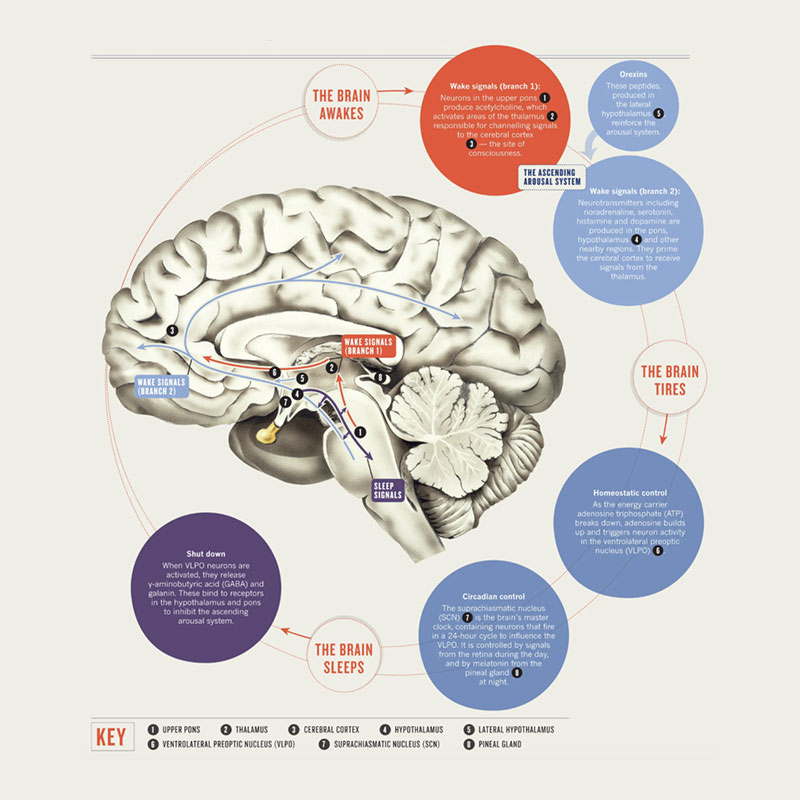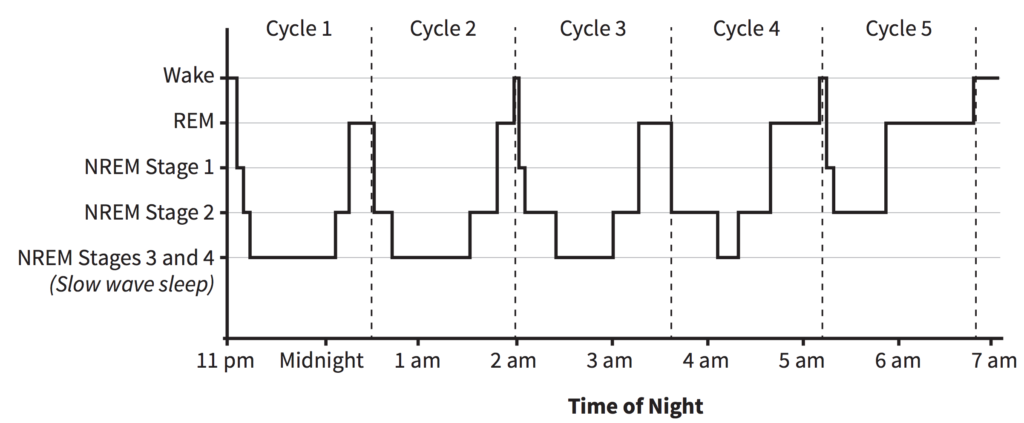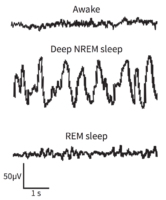Circadian Rhythm, Sleep
Sleep A-Zzzz: What You Need to Know About Sleep and Health

Article at a Glance:
- Sleep accounts for 7-9 hours out of a typical 24-hour day.
- Researchers are still working to better understand the comlexity and dynamics of sleep.
- Once thought to be a passive state, sleep is a highly active time for the brain.
Sleep A-Zzzz: What You Need to Know About Sleep and Health
Facebook Twitter LinkedIn Pinterest
Did you get a good night’s rest last night? We hope so because sleep is one of the fundamental pillars of health –alongside getting proper nutrition and enough exercise every day. Sleep deprivation, or a lack of deep (high quality) slumber at night, can negatively affect your mood, cognitive function, and performance during the daytime. It can also put you at greater risk for experiencing long-term health conditions, including but not limited to anxiety, weight gain, diabetes, heart disease, mood disorders, Alzheimer’s, and cancer. Though snoozing may seem like a mundane activity, it is essential for survival and longevity. Keep reading to learn the basics of sleep – what it is, why it’s important, and how it affects virtually every part of your life.
What is sleep, and why do we do it?
Sleep is the body’s rest cycle, a vital process that naturally occurs in mammals, birds, and reptiles. For humans specifically, sleep typically accounts for 7-9 hours out of a typical 24-hour day, during which the brain and body recover and flush out toxins to help prepare for tomorrow. “[It] is a period during which the brain is engaged in a number of activities necessary to live—which are closely linked to the quality of life,” says Johns Hopkins sleep expert and neurologist Mark Wu, M.D., Ph.D.
What is the anatomy of sleep?
Sleep is a complex and dynamic activity that researchers are still working to better understand. What we do know is that there are several structures within the brain that are involved with this process.

Hypothalamus – While this region of the brain is small, it plays a crucial role in many important functions, including but not limited to releasing hormones, regulating body temperature, as well as sleep cycles. Within the hypothalamus is an even smaller structure called the Suprachiasmatic nucleus (SCN) which contains thousands of photosensitive cells that receive light inputs through the eyes and control your circadian rhythm.
Pineal gland – Often referred to as the “Third Eye”, this pea-sized gland produces and regulates hormones – including melatonin, which is best known for the role it plays in inducing sleep. Scientists believe that peaks and valleys of melatonin over time are important for matching the body’s circadian rhythm to the external cycle of light and darkness. (NINDS)
Brain stem – Located at the base of the brain, this structure communicates with the hypothalamus to relax the body’s muscles and reduce arousal so that we don’t act out our dreams while we sleep.
Thalamus – During REM sleep, this area of the brain transmits imagery, sounds, and other sensations that fill our dreams to the cerebral cortex (which interprets and processes information from short- to long-term memory).
Amygdala — This almond-shaped structure is often referred to as the “emotional gas pedal” within the brain that decodes and processes emotions. It is notably increasingly active during REM sleep. It relies on messages that brain cells (neurons) send to each other to produce sensations such as fear, pleasure, and excitement – especially when the brain needs to learn that one thing leads to another. This strengthens the synapses between neurons and reinforces the emotions that you feel.

What are the stages of sleep?
Once thought to be a passive state, researchers now know that sleep is a highly active time in which the brain and some physiological processes are hard at work following a structured process.
Sleep is divided into two main categories: Rapid Eye Movement (REM) and Non-REM:
Non-REM Stage 1 – This is when your brain waves begin to slow from their daytime wakefulness patterns to sleep. Your heartbeat, breathing, and eye movements begin to slow, and your muscles relax.
Non-REM Stage 2 – This is a light sleep period that occurs right before you enter deeper sleep. During this stage, your core temperature drops, and your body continues to relax. You spend more of your repeated sleep cycles in stage 2 Non-REM sleep than in other sleep stages.
Non-REM Stage 3 – This stage is often referred to as “slow-wave,” “delta” or “deep” sleep. Your heartbeat, breathing and brain waves all slow down to their lowest levels during sleep. This is when the brain becomes less responsive to external stimuli, and as a result, it is most difficult to wake a person up from this stage. (Live Science)
REM – During REM sleep the brain is active, your eyes move rapidly in different directions (hence the name), and your heart rate increases. REM is when most dreaming happens. According to the National Sleep Foundation, REM sleep is when the brain processes information from the day so it can be stored in long-term memory.

The human body ebbs and flows through cycles of REM to non-REM sleep every 90 minutes. Each stage is important and has specific functions related to cognitive function, forming memories, removing toxins, and keeping the tissues and organs throughout your body healthy.
For continued reading: The Most Comprehensive List of Sleep Facts


Pingback: How to be More Compassionate with Your Lighting - Shop TrueLight